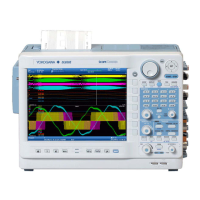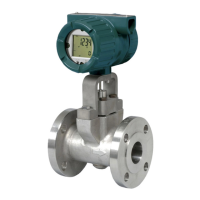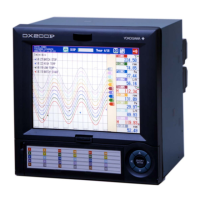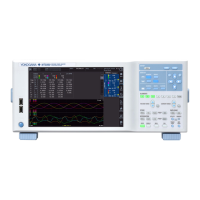Trigger Source
Trigger source refers to the signal that is used to check the specified trigger conditions. You can set
the trigger source to an analog signal, logic signal, realtime math signal, time, external signal, or power
line signal. Select the appropriate trigger source for the trigger type.
Trigger Level
Trigger level refers to the signal level used as a reference for detecting a signal’s rising and falling
edges or high and low states. With simple triggers such as the edge trigger, the DL850/DL850V
triggers when the trigger source level passes through the specified trigger level. The range and
resolutions that you can use to set the trigger level vary depending on the type of signal being
measured.
Trigger Slope
Slope refers to the movement of the signal from a low level to a high level (rising edge) or from a high
level to a low level (falling edge). When a slope is used as one of the trigger conditions, it is called a
trigger slope.
Trigger Hysteresis
When the trigger source is an analog signal, you can set a width (hysteresis) to the trigger level so that
the DL850/DL850V does not detect edges when the signal level changes within the specified width.
You can set the hysteresis around the trigger level for each type of measured signal.
Trigger Hold-off
The trigger hold-off feature temporarily stops the detection of the next trigger once a trigger has
occurred. This feature is useful in cases when you want to change the waveform acquisition interval,
such as when you are observing a PCM (pulse code modulation) code or other pulse train signal or
when you are using the history feature.
Trigger Position
When you move the trigger position, the ratio of the displayed data before the trigger point (pre-data)
to the data after the trigger point (post-data) changes. When the trigger delay is 0 s, the trigger point
and trigger positions coincide.
Trigger Delay
The DL850/DL850V normally displays waveforms before and after the trigger point. You can set a
trigger delay to display waveforms at a specified amount of time after the trigger occurrence.
2.2 Triggering

